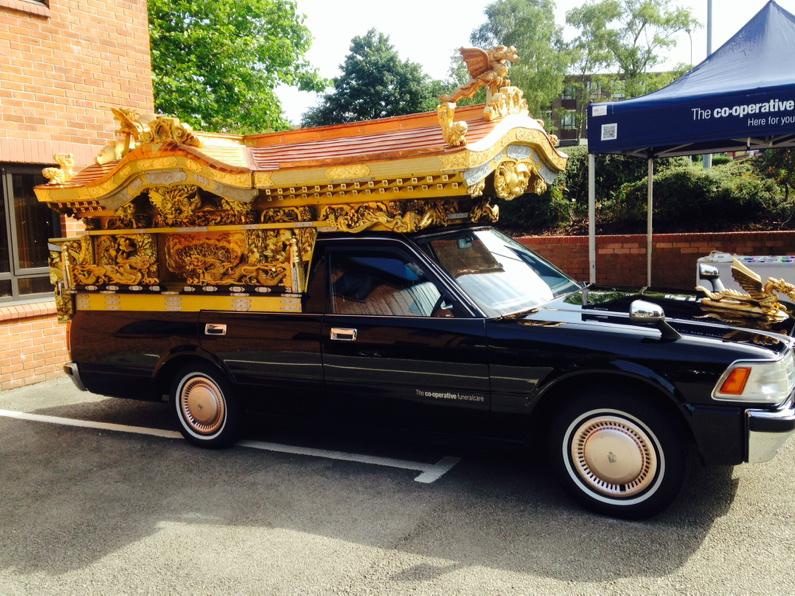
In Buddhist traditions around the world, the process of laying a loved one to rest is imbued with deep spiritual significance, compassion, and respect. Central to this ritual is the Buddhist hearse—a specialized vehicle that transports the deceased from the place of passing or the home to the monastery, temple, or crematorium. Far more than a mere conveyance, a Buddhist hearse is designed and operated in accordance with Buddhist values, reflecting impermanence, mindfulness, and the aspiration for a peaceful transition.
Historical Roots and Cultural Variations
The concept of a dedicated vehicle for funeral processions can be traced back centuries in Asia. In ancient India, pallbearers would carry the body of the Buddha’s followers to the cremation grounds on ornate, often rickshaw-like platforms. As Buddhism spread through East and Southeast Asia, local cultures adapted these processions, eventually giving rise to wheeled hearses that could accommodate more passengers and elaborate ceremonial elements.
In Thailand, hearses may resemble small temples on wheels, featuring carved wood details, tiered roofs, and golden accents. In Japan, Buddhist funeral vehicles tend to be more understated—often white vans adorned with simple Buddhist symbols and flowers. In China, elaborate dragon- and phoenix-motifs can grace the sides of the hearse, while in Tibet, colorful prayer flags might flutter in the breeze as the vehicle makes its solemn journey.
Design Elements and Symbolism
Buddhist hearses are crafted to embody the core tenets of the Dharma. Key design features often include:
- Lotus Motifs: The lotus flower, which blooms unstained from muddy waters, symbolizes purity of mind and the potential for awakening. Lotus carvings or decals on the hearse remind mourners of the promise of spiritual liberation.
- Endless Knots: Representing interdependence and the unbroken nature of existence, endless-knot patterns may adorn the hearse’s doors or roof.
- Dharma Wheel (Dharmachakra): This eight-spoked wheel symbolizes the Noble Eightfold Path. It often appears on the hearse’s side panels or rear door.
- Subdued Color Palette: While some cultures favor gilded embellishments, others maintain a muted color scheme—white, black, or brown—reflecting sobriety and respect.
Inside, the hearse cabin is arranged to facilitate chanting, prayers, and incense offerings. Low lighting, incense holders, and small altars for portrait photographs or statues of the Buddha create a space conducive to collective mourning and merit-making.
Rituals and Procession Practices
The journey of the Buddhist hearse unfolds as a moving ceremony:
- Purification Ritual
Before the hearse departs, monks and family members perform a blessing at the departure site. Water may be sprinkled around the vehicle, and protective mantras are chanted to ensure a safe passage. - Chanting and Musical Accompaniment
Buddhist hymns—varying by tradition from Theravada suttas to Mahayana sutras—are recited softly inside and around the vehicle. In some regions, musicians play traditional instruments (e.g., gong, bell, or hand drum) to set a solemn but compassionate tone. - Offerings Along the Route
As the hearse passes, onlookers may lay flowers, light incense sticks, or offer small gifts of food to the monks traveling alongside. These actions generate positive karma for both the deceased and the community. - Arrival and Final Rites
Upon reaching the crematorium or burial ground, the coffin is carried from the hearse in a respectful, measured pace. Monks lead the procession in final prayers, dedicating merit to the departed and invoking blessings for their next existence.
Modern Innovations and Comfort Features
Contemporary Buddhist hearses blend traditional symbolism with modern technology to enhance comfort, dignity, and environmental responsibility:
- Climate-Controlled Interiors: Maintaining a stable temperature protects floral arrangements and creates a comfortable environment for mourners and clergy.
- LED Lighting Systems: Gentle, adjustable lighting highlights sacred symbols and photographs without causing glare.
- Electric or Hybrid Powertrains: In alignment with Buddhist principles of non-harming and environmental stewardship, some service providers now offer electric hearses that minimize emissions.
- Custom Audio Systems: High-quality sound setups allow for clear playback of chanting recordings or live microphones for eulogies and sutra recitations.
- Accessibility Ramps: Folding ramps and hydraulic lift systems ensure that pallbearers can handle heavy coffins safely and with dignity.
Choosing the Right Funeral Service Provider
Families seeking a Buddhist hearse should consider several factors to ensure their loved one’s ceremony respects tradition and personal wishes:
- Cultural Familiarity: Providers with experience in specific Buddhist lineages (Theravada, Mahayana, Vajrayana) can guide rituals appropriately.
- Symbolic Customization: Ask about available design motifs—lotus carvings, prayer wheel decals, or region-specific iconography.
- Clergy Coordination: A quality service will coordinate with local temples or monasteries to arrange monk participation and chanting schedules.
- Environmental Options: For eco-conscious families, look for hybrid or electric hearses and biodegradable coffin materials that align with Buddhist precepts of non-harming.
- Compassionate Staff: Handling end-of-life services requires sensitivity and a deep understanding of the grieving process. Seek providers with testimonials highlighting empathetic care.
Honoring Impermanence with Mindful Ceremony
At its heart, the Buddhist hearse—and the funeral procession it enables—serves as a poignant reminder of life’s impermanence (anicca). Each ritual, symbol, and chant helps the bereaved confront loss with mindfulness, compassion, and equanimity. By transforming final farewells into acts of merit and communal support, the Buddhist hearse honors the deceased and uplifts the living, reinforcing the interconnected nature of all beings.
Whether adorned with ornate temple carvings or presented in simple elegance, the Buddhist hearse remains a vital vessel that carries not just the body, but the collective hopes, prayers, and aspirations of a community. In guiding loved ones along their final journey, it embodies the profound Buddhist teaching that even in sorrow, we can find compassion, clarity, and the seeds of future awakening.